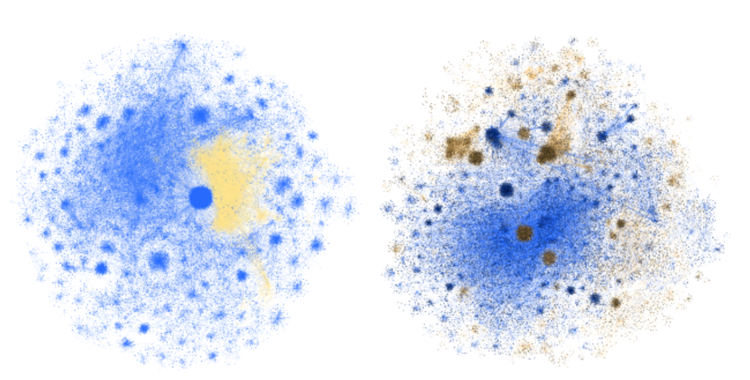


With the phenomenon of fact checking becoming more prevalent than ever, Professor Filippo Menczer [2] and the Center for Complex Networks and System Research [3] at Indiana University Bloomington [4] has decided to come up with a practical solution. According to their website, Hoaxy is an “open platform to visualize the online spread of claims and fact checking.”
The Problem with Social Media
The accredited Pew Research Center [5] has discovered that “approximately 65% of American adults access the news through social media” which has resulted in the formation of social bubbles and hyper-polarized echo chambers. This means that whether the everyday social media user is conscious of it or not, they are creating homogeneous spaces where they only follow or retweet like-minded individuals. The University says that this develops “considerable challenges for our capability to discriminate between facts and misinformation, and allocate our attention and energy accordingly.”
Furthermore, the fact that the news cycle is only getting faster just adds on to these already extremely complicated obstacles. This is why it is not too surprising to see how hoaxes or “fake news” can go viral within seconds and be believed by so many. The Center for Complex Networks and System Research has come up with a way to address and make sense of all this digital madness.
How it Works
Hoaxy [6] tracks both online fake news as well as fact checking on social media and hopes to become the first in its kind "to observe the competition dynamics between online misinformation and its debunking" in a systematic way. They track fake news from their origins, follow how the news is spread through social media, then collect and display all the data with interactive analytics and visualizations.
Their goal is “to reconstruct the diffusion networks induced by hoaxes and their corrections as they are shared online and spread from person to person.” This allows not only the general public but researchers and reporters alike to study and gather a better understanding of how massive digital misinformation functions.
A Work in Progress
For those that are excited to use this new platform, Hoaxy has not been released to the public yet as they are still in the preliminary phases. Every day the University is working hard to gather as much information as possible and perfect their site before it goes live. According to the World Economic Forum [7], massive digital misinformation is considered to be one of the highest future threats as it “sits at the center of a constellation of technological and geopolitical risks ranging from terrorism to cyber attacks and the failure of global governance.”
Menczer says “we are neither journalists nor fact checkers who verify but we help the public and the media understand fake news, we are one of the many instruments in the arsenal.” Hoaxy hopes to provide more insight to people all over the world so that we can, in turn, develop better counter measures in stopping the potentially dangerous spread of misinformation.
Source URL: http://440468.6bgr9ubv.asia/magazine/focus/facts-stories/article/technology-new-way-fact-check
Links
[1] http://440468.6bgr9ubv.asia/files/technologypng
[2] https://en.wikipedia.org/wiki/Filippo_Menczer
[3] http://cnets.indiana.edu
[4] https://www.indiana.edu
[5] http://www.pewresearch.org
[6] http://cnets.indiana.edu/blog/2016/12/21/hoaxy/
[7] https://www.weforum.org